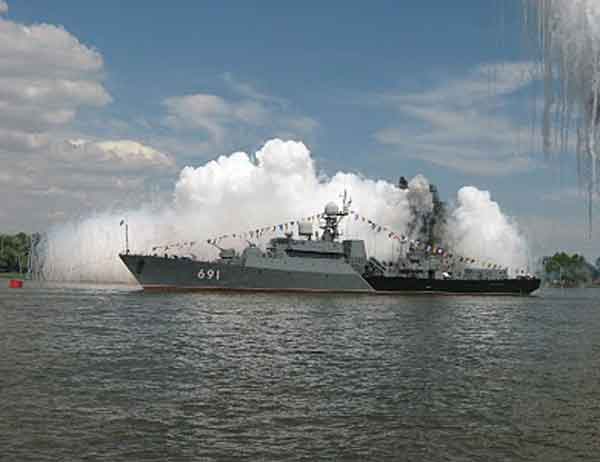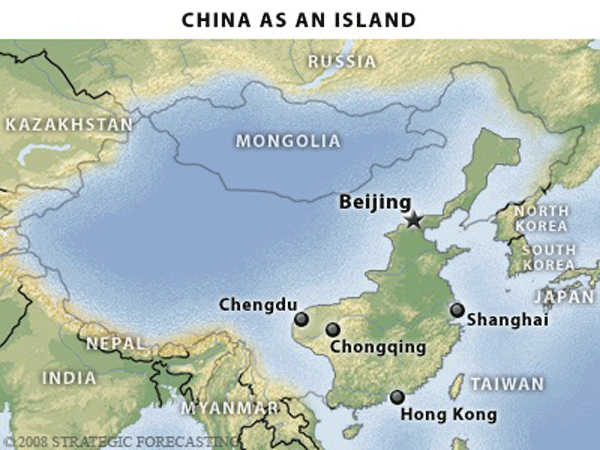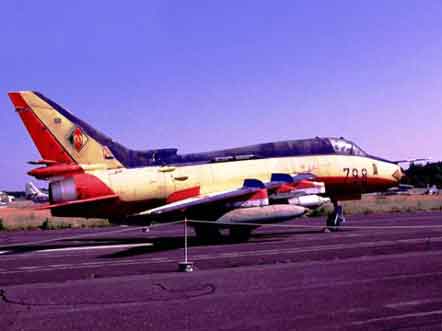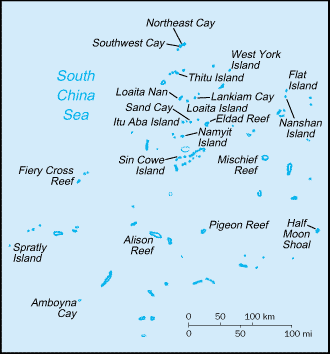Trước chuyến thăm của Chủ tịch Trung Quốc, ông Hồ Cẩm Đào sang Hoa Kỳ tuần này, các giới quan sát tại Mỹ đã đánh giá cả về sức mạnh quân sự hai bên, và nhắc đến Biển Đông như một điểm nóng, tạo ra căng thẳng trong quan hệ Mỹ - Trung.
BBC Tiếng Việt đã phỏng vấn Tiến sĩ Richard Weitz từ Hoa Kỳ về bối cảnh cán cân quân sự của Việt Nam trong quan hệ với Trung Quốc và nhu cầu tìm kiếm đồng minh từ Hoa Kỳ.Trước hết, ông Weitz, Giám đốc Trung tâm nghiên cứu quân sự Hudson tại Washington, tác giả bài 'Bấm Balancing China Through Vietnam' đăng hôm 13/1/2001 trên trang Second Line of Defense, nói về an ninh khu vực Đông Nam Á năm qua:
Tiến sĩ Richard Weitz: Tôi nghĩ tình hình an ninh khu vực đã trở nên tồi tệ hơn trong năm qua, chủ yếu là do Trung Quốc thay đổi cách ứng xử của họ. Tình hình hơi bất ổn một chút, nào là diễn tập quân sự, Trung Quốc xích lại gần Bình Nhưỡng hơn. Còn ở Biển Đông thì hải quân Trung Quốc và các nhà ngoại giao Trung Quốc cũng trở nên hung hăng hơn trong việc thử lửa một số vấn đề hàng hải.
Chuyện tương tự như xảy ra ở vùng Biển Đông Á với Nhật Bản. Do đó, bên ngoài vùng biên hải Trung Quốc nhiều vụ tranh chấp đã và đang trở nên gay gắt hơn, với cường độ cao hơn. Tôi cho rằng đó là do Trung Quốc đã thay đổi thái độ. Nhưng không hiểu ví lý do gì, họ lại cho rằng mình đang đi bước lùi.
Học thuyết 'Chiến tranh Nhân dân' này không hiệu quả trên biển
TS Richard Weitz
Họ cũng trở nên hung hăng hơn trong thái độ ứng xử với Nhật Bản trên một số hòn đảo. Họ cũng đã cho tàu hải quân tấn công thuyền đánh cá của Việt Nam. Nói tóm lại , chính sách ngoại giao của Bắc Kinh trên các vùng biển đang trở nên mạnh bạo hơn bình thường.
BBC Tiếng Việt: Lãnh đạo Việt Nam đang bàn cãi về cái gọi là Chiến lược 10 năm về Biển Đông. Trong bài viết của ông, ông cho rằng đây là chiến lược "xù lông nhím" (nguyên văn: con tôm độc) để Trung Quốc không dám động vào . Ông có thể giải thích thêm ý này được không?

Tiến sĩ Richard Weitz đưa ra lập luận rằng Việt Nam có thể là đồng minh tiềm năng của Mỹ để cân bằng lại Trung Quốc
Việt Nam dựa vào chiến tranh du kích và chủ nghĩa dân tộc mạnh mẽ, nhằm tạo thế. Và tuy thế lực này bất tương xứng với Trung Quốc, nhưng cũng đủ mạnh để ngăn ngừa ý chí xâm lăng từ Trung Quốc. Bởi vì những lợi ích Trung Quốc đạt được sẽ bị đổi lại bằng nhiều mất mát từ sức mạnh chống trả của Việt Nam.
BBC Tiếng Việt: Quân đội Nhân dân Việt Nam có nhiều năm kinh nghiệm chiến đấu và họ theo học thuyết Chiến tranh Nhân dân. Tuy nhiên, học thuyết này có thể không hiệu quả trên biển?
Tiến sĩ Richard Weitz: Biển là địa bàn chiến sự hoàn toàn khác. Rồi còn cả vấn đề dùng phương tiện hải quân nào nữa. Đúng vậy, học thuyết này không hiệu quả trên biển. Họ có thể đã mất đảo Hoàng Sa rồi. Tình hình đang trở nên khó khăn. Đơn giản là Việt Nam không có đủ sức mạnh tự mình chống trả sự chiếm đóng hay xâm lăng lãnh thổ của Trung Quốc như Việt Nam đang hô hào.
Do đó Việt Nam cần đối trọng quyền lực với Trung Quốc từ bên ngoài, mà tôi cho là Hoa Kỳ. Nhưng như ta biết, Việt Nam cũng không quá lộ liễu khi làm như vậy. Việt Nam sẽ cảm thấy rất bất ổn khi ký kết với Hoa Kỳ để kiềm chế Trung Quốc một cách lộ liễu. Thực tế là Việt Nam thích gắn bó quan hệ ngoại giao với Hoa Kỳ hơn.
Nếu không, tôi chắc chắn là Việt Nam biết họ phải giải quyết việc này với cả Trung Quốc, Hoa Kỳ cùng các nước láng giềng một khi Việt Nam muốn khẳng định chủ quyền trên các khu vực họ muốn.
Trong phần II của cuộc phỏng vấn sẽ đăng tuần sau, mời quý vị đón đọc phân tích của Tiến sĩ Richard Weitz về Hải quân, Không quân Việt Nam trong bối cảnh cần mua vũ khí để hiện đại hóa quốc phòng ra sao.
Balancing China Through Vietnam
By Richard Weitz

Russia delivered two Gepard frigates, each armed with eight KH-35U anti-ship missiles and displacing 1,500 tons, to the VPN in 2009 and 2010 . These are Vietnam’s largest surface combatants. Credit photo : http://defense-studies.blogspot.com
01/13/2011 – The public display of China’s new J-20 stealth fighter, the expected appearance soon of China’s first aircraft carrier, and Secretary Gates’ troubled visit to the PRC reaffirm the importance for the United States of having good security relations with China’s neighbors. Defense ties with the Republic of Korea remain strong, while those with Japan have recovered from last year’s downturn, thanks partly to China’s confrontational policies regarding the territories in dispute between Beijing and Tokyo. But U..S. -Vietnamese security ties lag somewhat due to the legacy of confrontation and other factors. Relations between the United States and Vietnam have become stronger in recent years despite continuing disagreements over Vietnam’s domestic human rights policies and other issues. Cooperation now extends beyond the realm of economics and the recovery of soldiers’ remains to include joint diplomatic initiatives to counter Beijing’s expansive maritime claims.

http://www.investorsinsight.com/blogs/john_mauldins_outside_the_box/archive/2008/06/12/the-geopolitics-of-china.aspx
In 2009, the U.S. Defense Security Cooperation Agency announced its willingness to permit the export of “non-lethal” military equipment to Vietnam. In early August 2010, the Vietnam’s Foreign Ministry confirmed the commencement of U.S.-Vietnamese negotiations on a civil nuclear cooperation agreement. That same month, the U.S. and Vietnamese held their first formal defense talks and their navies conducted their first joint exercises since the Vietnam War ended. The destroyer USS John McCain conducted exercises with ships of the Vietnamese People’s Navy (VPN). The nuclear-powered USS George Washington aircraft carrier concurrently hosted a combined civilian-military delegation from Vietnam while sailing in the disputed South China Sea.
Threats
Vietnam has the misfortune of sharing a land border with China, which has led to centuries of invasions and armed conflicts between the two countries, most recently in the late 1970s. Still, Sino-Vietnamese tensions recently have involved primarily the South China Sea. This 3.5 million-square kilometer (km) body of water contains islands, minerals (oil and natural gas reserves lie below the sea), and maritime passages contested by the various littoral states. Vietnam and China claim all the small islands in the South China Sea, while Brunei, Malaysia, the Philippines, and Taiwan claim some of them. The Spratly and Paracel island chains are the most prominent of the islands, thought to be surrounded by undersea oil and gas reserved.
Vietnam has the misfortune of sharing a land border with China, which has led to centuries of invasions and armed conflicts between the two countries, most recently in the late 1970s. Still, Sino-Vietnamese tensions recently have involved primarily the South China Sea. This 3.5 million-square kilometer (km) body of water contains islands, minerals (oil and natural gas reserves lie below the sea), and maritime passages contested by the various littoral states. Vietnam and China claim all the small islands in the South China Sea, while Brunei, Malaysia, the Philippines, and Taiwan claim some of them. The Spratly and Paracel island chains are the most prominent of the islands, thought to be surrounded by undersea oil and gas reserved.
Most of Vietnam’s oil reserves are located offshore of the Mekong Delta. Furthermore, Vietnam has an interest in pursuing claims to the potentially energy rich Spratlys because declining domestic oil production and growing energy consumption may cause Vietnam to become an oil importing country. The Paracels and Spratlys also intersect maritime commerce lanes originating from Vietnamese ports and encompass areas of extensive Vietnamese fishing and aquaculture. Nationalist sentiments also play a role. Demonstrations erupted across Vietnam when China declared the Paracel Islands to be a part of the Hainan Province municipality in 2008. Another potential source of conflict with China is the Mekong River. Only a fraction of its course runs through Vietnam, but its waters irrigate the Mekong Delta in southern Vietnam. The Mekong Delta produces half of Vietnam’s rice crop, and makes Vietnam the world’s second largest national exporter of rice , which is a key source of foreign exchange for Hanoi. The Mekong Delta is threatened by both rising sea levels and the diversion and damming of Mekong River waters in the upriver areas of China, which leave the Mekong Delta provinces vulnerable to increases in soil salinity and land erosion.
Credit image : http://en.wikipedia.orgResponse
Vietnam continues to cultivating a strong and militant form of national independence designed to make Vietnam a “poison shrimp” that China cannot digest. Following the end of the Cold War and the lavish defense and economic subsidies provided by other Soviet bloc members, Vietnam readjusted its military posture by withdrawing from Cambodia and settling land border disputes with China.
Still, with almost 500,000 soldiers under arms, the Socialist Republic of Vietnam possesses one of the world’s ten largest militaries. In addition, the government persists in purchasing foreign weapons systems to complement the troops’ extensive training in guerrilla warfare and more traditional combat techniques.
In 2009, Vietnam’s gross domestic product (GDP) was $92.4 billion and its 2009 defense budget amounted to $4 billion, or about two percent of the total GDP. The most optimistic projection for the budget of the Vietnamese People’s Army (VPA) in 2018, assuming that 5% of national GDP goes for defense, would be in the neighborhood of $10 billion, which is roughly equivalent to the 2009 defense outlays for Taiwan.
But spending five percent of GDP is more typical in more prosperous and developed states. Most ASEAN members spent three percent of their respective GDPs on defense With a defense spending share of three percent of GDP, Vietnam is calculated to spend around $5.5 billion by 2018.. Even so, foreign arms purchases could increase if the VPA reduced its personnel levels further.
Russia has succeeded the Soviet Union as the main provider of sophisticated weapons to Vietnam, though the relationship between Moscow and Hanoi is based now on business and strategic considerations rather than ideological commonality. Canadian and European companies have also sold some weapons to China.
Although the United States has not provided Vietnam with major weapons systems, the United States has relaxed Cold War-era transfer restrictions. In addition, American diplomats have evinced interest in working with their Vietnamese counterparts to counter Chinese maritime claims in the South China Sea.
At present, the Obama Administration has indicated a willingness to sell non-lethal military goods to Vietnam. Of course, the exact definition of “non-lethal” is open to interpretation.
Navy
The Vietnamese People’s Navy (VPN) dedicates most of its resources to monitoring the activities of foreign navies and fishing fleets as well as for countering maritime smuggling and piracy. Vietnam’s naval strategy can be best summarized as sea denial, preventing enemy forces from operating in Vietnamese waters, rather than seeking to proactively project power. Russia is the main supplier of warships to Vietnam.
Russia delivered two Gepard frigates, each armed with eight KH-35U anti-ship missiles and displacing 1,500 tons, to the VPN in 2009 and 2010 . These are Vietnam’s largest surface combatants.
Russia and Vietnam are currently negotiating the delivery of two more Gepard frigates, to be possibly built under license in Vietnam’s shipyards. The primary mission of the VPN’s Gepard frigates would be to interdict enemy marine commerce and engage fast attack craft such as those possessed by rival claimants to South China Islands. Previously, the VPN received supersonic, Russian P-270 Moskit and P-800 Oniks anti-ship missiles from Russia.
In 2009, Vietnam signed a $1.8 billion contract to acquire six Kilo-class conventional attack submarines. The deal also includes Russian technical support and Russia’s construction of bases to house the submarines. The Kilos, while suffering from speed and endurance limitations due to their limited battery capacity, are quiet and well-armed with torpedoes and anti-ship missiles.
They can exploit the PLAN’s longstanding weakness in the area of antisubmarine warfare to observe PLAN military exercises as well as those of other countries. They could also help Vietnam break out of any foreign naval blockade. Vietnam’s initial submarines came from North Korea, which sold Hanoi two Yugo class midget submarines in 1997 for espionage and infiltration purposes .
In coming years, the VPN is likely to focus on acquiring new small surface warships in the corvette or frigate size range (displacement between 1,000 to 4,000 tons) to both support littoral operations and tp gain experience in operating capital ships. Vietnam also is likely to obtain additionally naval transports to re-supply islands garrisons
Air
Canada has emerged as a major source of military aircraft to Vietnam. Last year, Vietnam acquired six DHC-6 400 Twin Otter amphibious planes from Canada for $500 million. The DHC-6 400 is primarily a noncombatant aircraft designed for search and rescue, maritime patrol, and naval re-supply missions. The Vietnam Maritime Police (functionally equivalent to the U.S. Coast Guard) purchased three C212 surveillance aircraft and MSS 6000 radar in 2008 from European manufacturers. During the 1990s, Vietnam purchased a dozen Su-27 Flankers heavy fighters. Vietnam received 8 Su-30MMK strike fighters in 2009, and ordered a dozen more the following year for $1 billion
The most powerful airplane in the arsenal of the Vietnam People’s Air Force (VPAF) is the Sukhoi Flanker, Vietnam’s sole fourth-generation aircraft. They are highly maneuverable and can fly far. They are armed with R-77 long-range air-to-air missiles and R-27 short ranged missiles and, on paper, match anything China can field. In 2005, Vietnam also purchased 40 second-hand Su-22M fighter bombers.
 Credit photo : http://www.flightglobal.com
Credit photo : http://www.flightglobal.comLooking ahead, the Vietnam People’s Air Force will most likely need a modern single engine fighter to replace its 200 obsolete MiG-21s. The MiG-21 replacement would most likely require multi-role capability for long-range air-to-air missiles and precision guided ground attack munitions. Possible low cost candidates would be the Indian LCA, MiG 29, Swedish Saab Gripen, Mirage 2000 and Mid-Life Upgrade (MLU) F-16s. Ironically, Deputy Defense Minister Nyguen Huy Hieu’s Janurary 2008 meeting with the Chinese Defense Ministry’s Committee of Science, Technology and Industry raises the possibility of VPAF procurement of the low cost PRC JF-17 fighter, which is co-produced with Pakistan. The VPAF may also consider obtaining aerial refueling aircraft for its Flanker aircraft to increase their range and flight duration.
Ground
Russia has design and constructed Vietnam’s modern air defense system. Two batteries comprising a total of twelve launchers of the formidable S-300PMU1 long-range surface to air missiles were purchased in 2003 from Russia. They have a range of 125 kilometers. One battery of six launchers is deployed at the capital city of Hanoi and the economic hub of Ho Chi Minh city. Vietnam also has a large number of anti-aircraft guns dispersed throughout the country.
The Vietnam People’s Army has no modern self-propelled artillery or main battle tanks, leaving it at a disadvantage in a ground war with the PLA. Israelis have been upgrading Vietnam’s T-55s with improved passive and reactive armor, a larger 125mm cannon and Polish fire control systems, but this is a stopgap measure since Vietnam will need new tanks soon because of protection, ammunition and engine limitations imposed by the T55’s small size.
Since the terrain of most of Vietnam’s border consist of either swamps or mountains, the VPA is unlikely to seek to acquire main battle tanks in the 60+ ton weight category, which excludes most Western tanks such as the Leopard II and M1 Abrams. The VPA will most likely acquire a tank like the T-90, which is in the 45-to-50 ton weight range. The T-90 is also logistically less demanding than most NATO tanks, but still carries considerable firepower.
Vietnam has indigenously upgraded dozens of M113 armored personnel carriers captured from U.S. and South Vietnamese forces, but modernizing these platforms has proven challenging due to the U.S. arms sanctions on Vietnam. The VPA would like to upgrade these and its other armored personnel carriers with better cannons, secondary remote weapons stations, visual imaging equipment, and gas turbine or diesel engines. The VPA’s BM-21 Grad rocket launchers, first deployed in 1963, will probably be replaced by a new area suppression weapon.
Possible American Sales
In the past, domestic American political concerns have impeded U.S. arms sales to Vietnam. These have included painful memories of the Vietnam War, the Vietnamese government’s mistreatment of Hmong and Degar minorities and suppression of political dissent, and the Vietnamese-American community’s strong hostility towards the ruling Vietnamese Communist Party.
Foreign policy considerations have added additional obstacles. These have included concerns about harming U.S. relations with more traditional U.S. Southeast Asian allies, especially Singapore and Thailand. Both countries have been designated non-NATO major allies and Thailand fought extensive border skirmishes on the Cambodian border with Vietnam in the 1980s. Chinese officials would also presumably object to the U.S. transfer of many lethal weapons systems to Vietnam, and might retaliate by sending more weapons to regimes hostile to the United States.
Vietnam possesses sizeable quantities of U.S.-origin weapons captured during the civil war. These include F-5 Tiger fighters, OV-10 Bronco attack planes, C-130 Hercules Transports, UH-1 Huey helicopters, M113 APCs and M-48 tanks. Most of these platforms have been retired due to age and lack of maintenance and spare parts, but U.S.-made transport planes, helicopters and armored personnel carriers still serve in the VPA and could be upgraded by Americans to enhance their safety, range, payload, avionics, and engines for fuel efficiency.
The VPN has established re-supplying its island garrisons as a high priority, which suggests that Vietnam might be interested in decommissioned American amphibious warships stripped of offensive armament. The United States has sold Newport class Tank Landing Ships to Australia, Chile, Mexico, Morocco, Spain and Taiwan. The ships have ramps for offloading cargo in shallow waters, such as those in the Spratly Islands littoral. Ex-USN Anchorage Landing Ship Dock and Austin class Landing Platform Docks have been sold respectively to Taiwan and India. Compared to the Tank Landing Ships, these have increased capacities for supporting helicopter operations and would enhance Vietnam’s marine search and rescue capabilities.
Vietnam might also want to acquire U.S. transport helicopters. American S-70 Seahawks and UH-60 Blackhawks are attractive in that, in addition to carrying loads in excess of four tons, they can be optimized for marine environments, high altitudes, and night-time operations. Of additional interest are CH-47 Chinook heavy helicopters, which could be used both for airmobile operations and to re-supply distant mountain outposts near the Chinese border. The C-130J Super Hercules and C-27A Spartan transport planes would be ideal for Vietnam’s air transport needs. The two planes can carry 20 and 11 ton payloads, respectively, and provide short take off capabilities from rugged airstrips, thus having useful humanitarian applications for delivering relief in the aftermath of typhoons and other natural disasters.
Previous Vietnamese attempts to produce domestically made unmanned aerial vehicles with Israeli help have been unsuccessful. The MQ-1 Predator and tactical level RQ-7 Shadow would provide long endurance, low observable, and cost effective surveillance capabilities of Vietnam’s extensive land and marine boundaries.
UAVs would also help coordinate land and naval maneuvers. Vietnam could also profitably acquire AEW&C aircraft such as the E-2T Hawkeye, which would improve battlefield data processing, radar coverage, and communications. Such a move to acquire AEW&C capabilities would help Vietnam match the Chinese KJ-2000 and KJ-200 aircraft, Singapore’s Phalcon Gulfstream, and Thailand’s Erieye Saab 340.
Modernization of the VPA also requires the renovation of the VPA’s communications and control systems. If American-Vietnamese ties were to improve significantly, Vietnam could have opportunities to purchase Link 11 and 16 equivalent radios and communication datalinks like MIDS/LVT-1 for increasing information flow and security at both the strategic and tactical level . The increasing situational awareness and real-time decision-making capabilities from digitalized command systems would allow Vietnam to integrate air, land, and sea operations better..
Finally, the Vietnam War spewed tens of thousands of tons in unexploded landmines, artillery shells, bombs, booby traps and other explosives across Vietnam, including in heavily populated urban areas and farmland. U.S.-made de-mining vehicles such as the Cougar Mine Resistant Ambust Protected (MRAP) vehicle and M60 Panther drone would greatly improve the efficiency, speed, and safety of Vietnamese de-mining efforts, much of which is currently performed manually.
